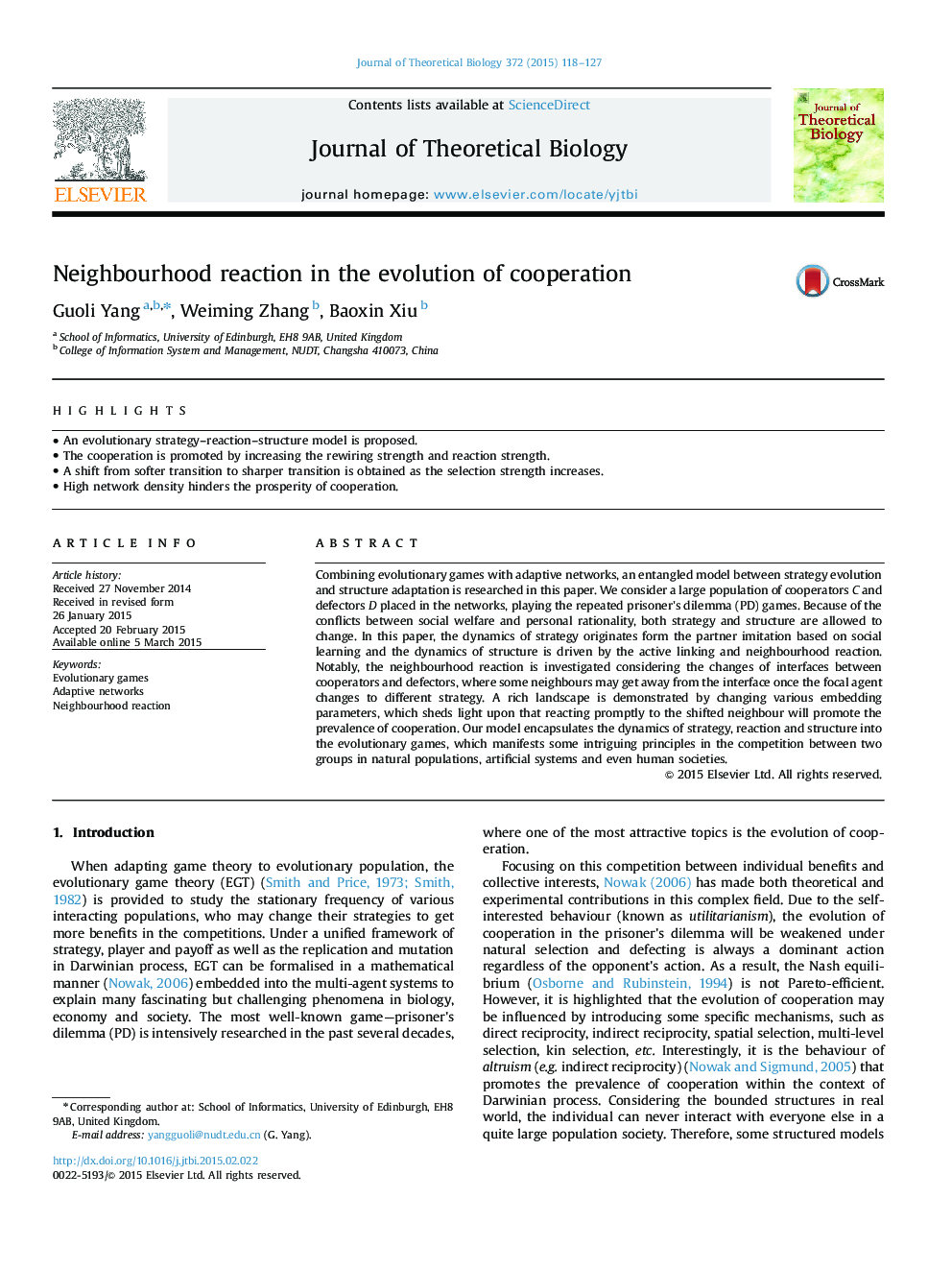| Article ID | Journal | Published Year | Pages | File Type |
|---|---|---|---|---|
| 6369820 | Journal of Theoretical Biology | 2015 | 10 Pages |
Abstract
Combining evolutionary games with adaptive networks, an entangled model between strategy evolution and structure adaptation is researched in this paper. We consider a large population of cooperators C and defectors D placed in the networks, playing the repeated prisoner׳s dilemma (PD) games. Because of the conflicts between social welfare and personal rationality, both strategy and structure are allowed to change. In this paper, the dynamics of strategy originates form the partner imitation based on social learning and the dynamics of structure is driven by the active linking and neighbourhood reaction. Notably, the neighbourhood reaction is investigated considering the changes of interfaces between cooperators and defectors, where some neighbours may get away from the interface once the focal agent changes to different strategy. A rich landscape is demonstrated by changing various embedding parameters, which sheds light upon that reacting promptly to the shifted neighbour will promote the prevalence of cooperation. Our model encapsulates the dynamics of strategy, reaction and structure into the evolutionary games, which manifests some intriguing principles in the competition between two groups in natural populations, artificial systems and even human societies.
Keywords
Related Topics
Life Sciences
Agricultural and Biological Sciences
Agricultural and Biological Sciences (General)
Authors
Guoli Yang, Weiming Zhang, Baoxin Xiu,
